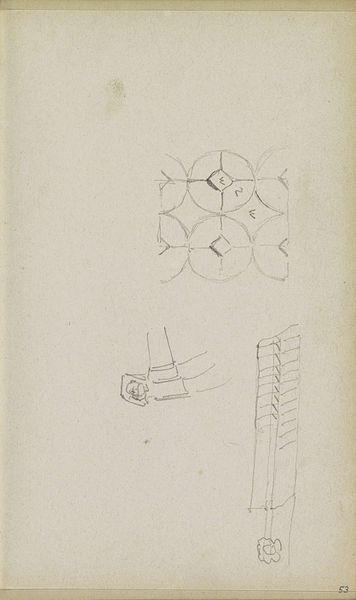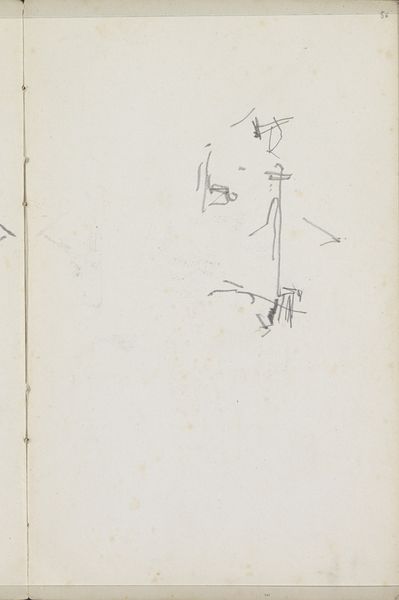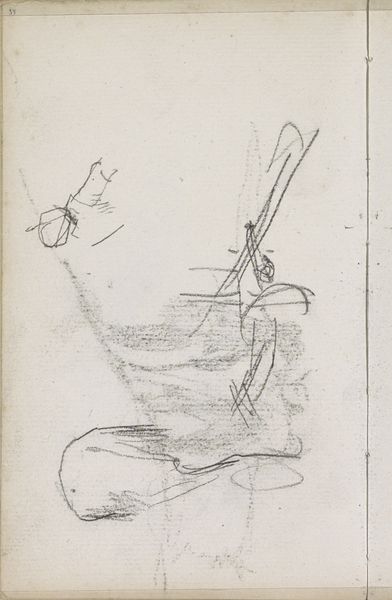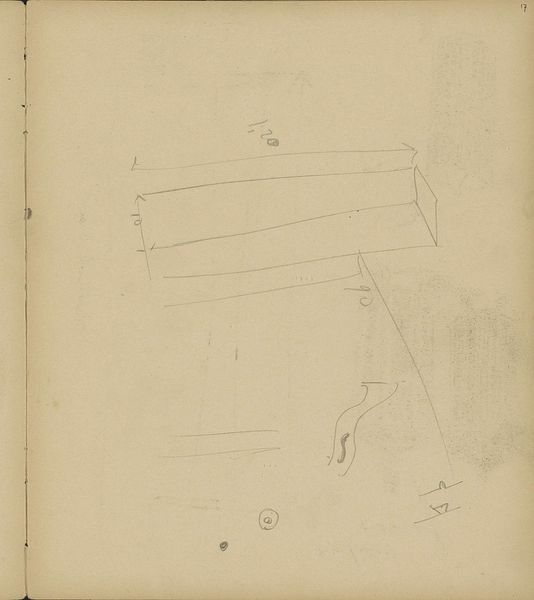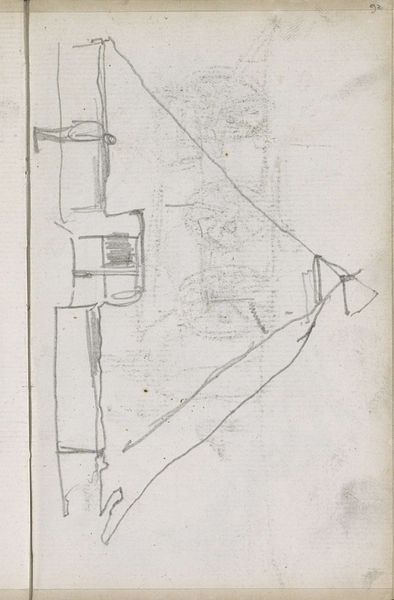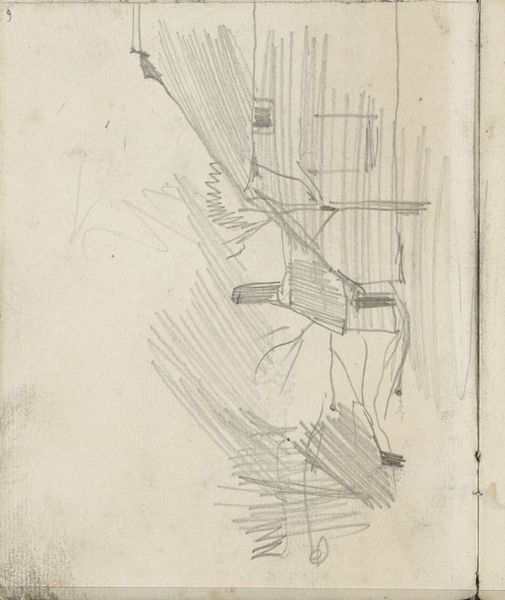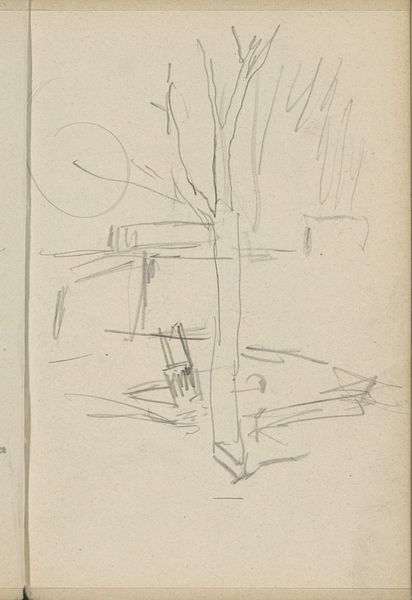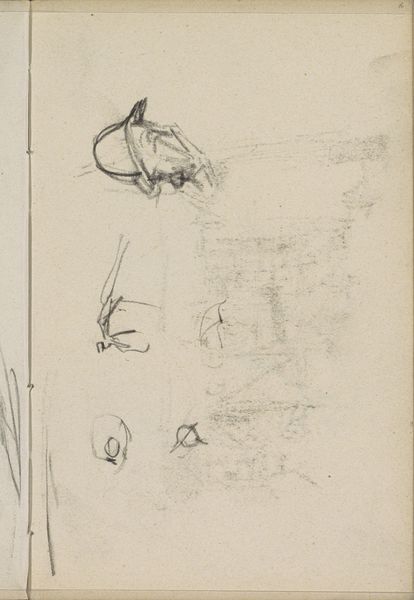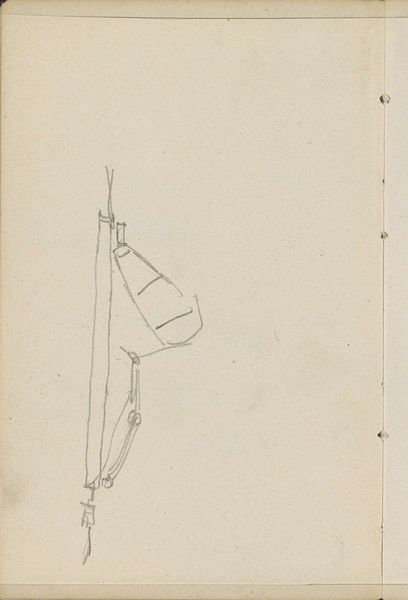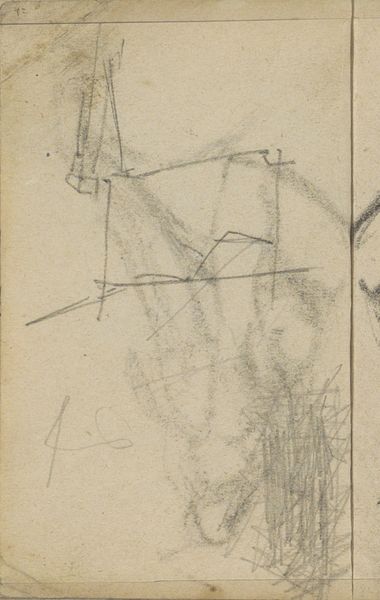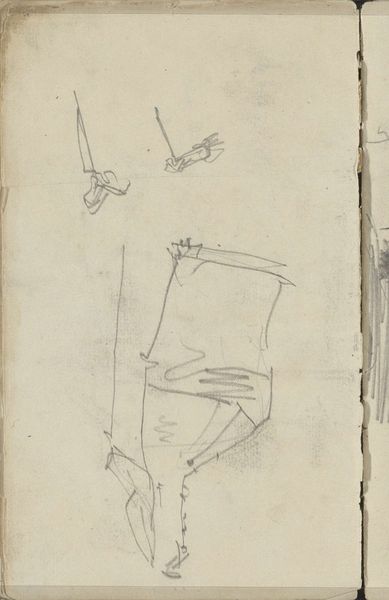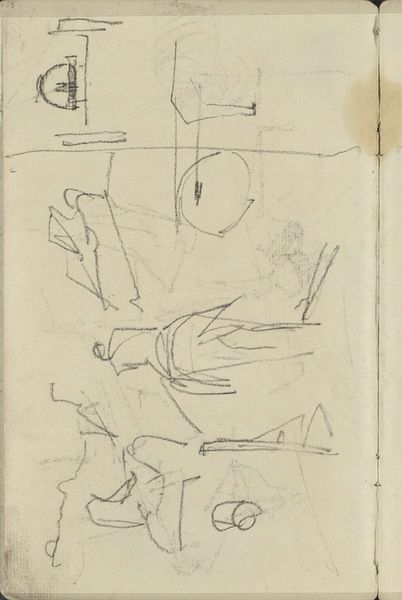
drawing, pencil, graphite
#
drawing
#
amateur sketch
#
toned paper
#
light pencil work
#
quirky sketch
#
impressionism
#
pencil sketch
#
incomplete sketchy
#
figuration
#
form
#
personal sketchbook
#
sketchwork
#
pencil
#
line
#
graphite
#
sketchbook drawing
#
sketchbook art
Copyright: Rijks Museum: Open Domain
Editor: So, here we have “Studieblad,” a graphite and pencil drawing by George Hendrik Breitner, made between 1884 and 1886. It's interesting because it looks like a page from a personal sketchbook—very immediate and raw. What's your perspective on this piece? Curator: For me, the interesting part is Breitner's process here. We're seeing the evidence of his labor, the material interaction between pencil, graphite, and paper. It’s not a finished, idealized image but a record of his artistic investigation. Editor: Right, it's about the making of the image itself, rather than a polished end product. But what was he exploring, do you think? Curator: Precisely! The drawing appears incomplete and sketchy. I find myself thinking about what types of labour he would have wanted the drawings to portray versus the actual marks made visible. Consider where the artwork sits in the context of impressionism in 19th century Amsterdam - What social issues surrounding labor may have been subtly investigated? Editor: Hmm, that makes sense. Breitner was known for documenting city life, right? This could be an early exploration of form related to his larger projects. Curator: Exactly! These quickly made drawings aren't only notes of form, they are also indicative of art's changing relationship to industrial materials and production, where drawing acts as a testing ground for making paintings and even, arguably, the emerging photographic techniques. Editor: I never thought of it that way! Thinking about this drawing as a site of material exploration within the context of its time really shifts my perspective. Curator: It transforms the appreciation. What were once seen as random forms emerge with meaning in the evolving art world. We can explore how even these loose sketches hold material clues for broader economic or social themes that emerge in that time.
Comments
No comments
Be the first to comment and join the conversation on the ultimate creative platform.
